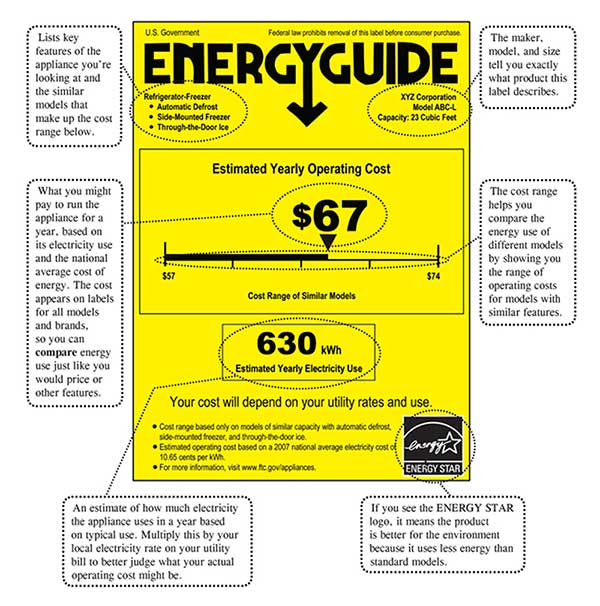Here at Fowles, we sell appliances through our weekly Home Renovator’s Auction. Depending on what we’ve got available on a given week, you might find cheap fridges, dishwashers, clothes washers and more. Whatever we get a good deal on, we auction off to you at incredible savings. In fact, you might save up to 90% off of the original retail price. When you’re looking at savings like that, you can afford to buy the best. In fact, you may be able to get a top-performing, state of the art, energy efficient appliance for less than you’d pay for the cheapest appliance at your local retailer.
When you want the best, one thing you should be looking at is the energy efficiency rating. Large appliances are some of the biggest consumers of energy in our houses. According to the Australian government, your appliances are responsible for approximately 30% of the energy use in your home.

The Yellow EnergyGuide Label
EnergyGuide is an Australian government program that helps consumers decide between appliances by providing standardised information on their energy use. These labels are great for comparing similar products and not so great for providing realistic estimates of energy cost. The values given on them are based on national averages for previous years, so you can probably see why they’re not likely to reflect any particular household’s future energy use or utility bills.
The EnergyGuide label lists the characteristics of the appliance in small print at the top, and then compares it with similar appliances in the middle and bottom sections. The estimated annual operating cost allows you to compare the appliance with other similar products and find out the range of expected energy cost. Below, you’ll see the estimated annual electricity use. That allows you to get an idea of how significant that particular type of appliance’s energy use is, compared to other appliances.
What’s EnergyStar?
EnergyStar started out in the early 1990s in the US. It’s a labelling program that’s aimed at identifying products that offer better than average energy efficiency. In the past couple of decades, other governments, for example, Australia’s and Canada’s, have created their own flavours of EnergyStar.
As the industry standards for efficiency improve, it becomes more difficult for appliances to get an EnergyStar rating; it’s always current and a good way to compare what’s available on the market. If an EnergyGuide label has an EnergyStar logo on it, that means the appliance is above average in its class.
You’re saving money buying at auction, and you can save even more. Your energy bill will be lower every month if you choose an energy efficient model, so take a look at the EnergyGuide labels, and see if there’s an EnergyStar logo, too. Of course, you’ll need an appliance that does the job you need it to and fits into the space you have, but it’s great if it can also save you a bundle on energy use.
